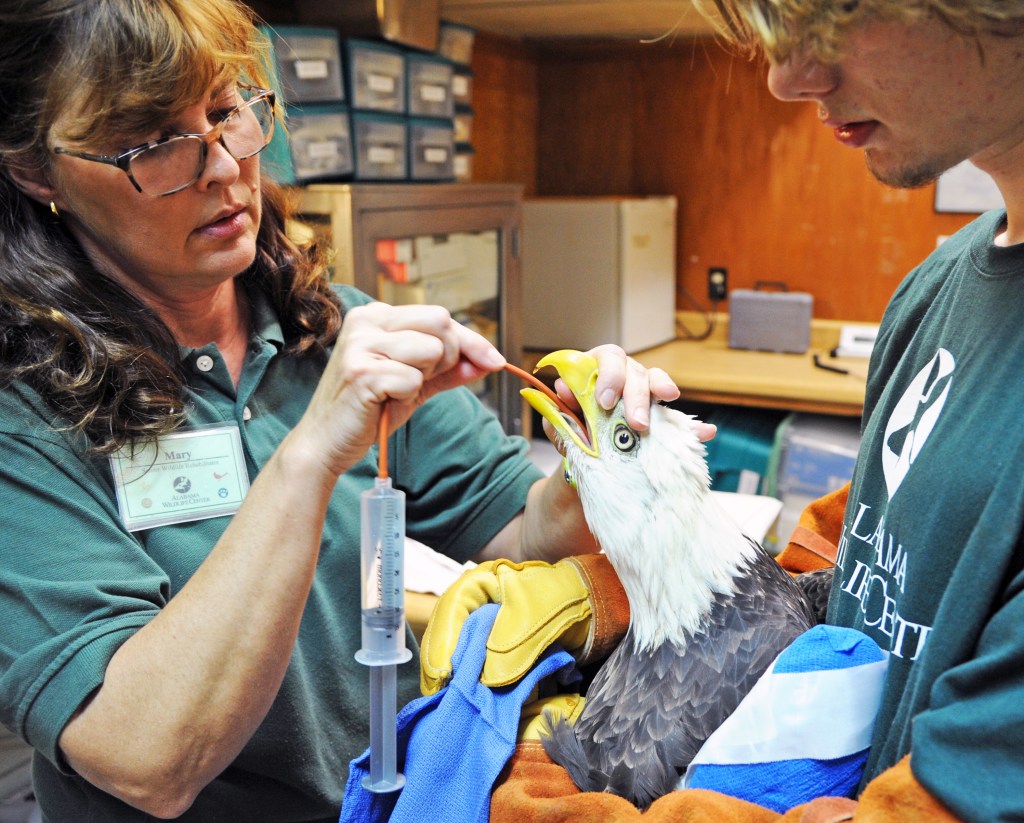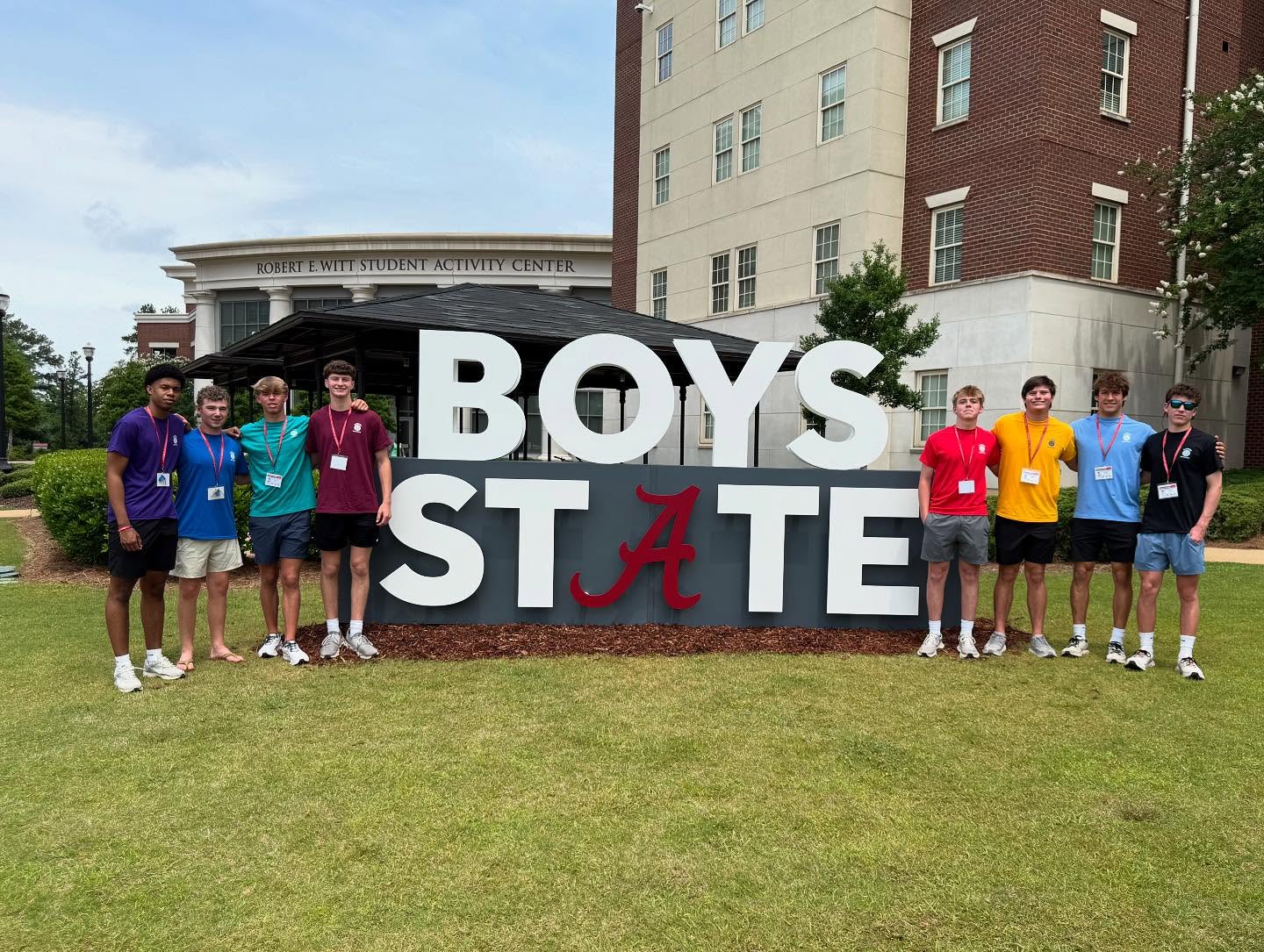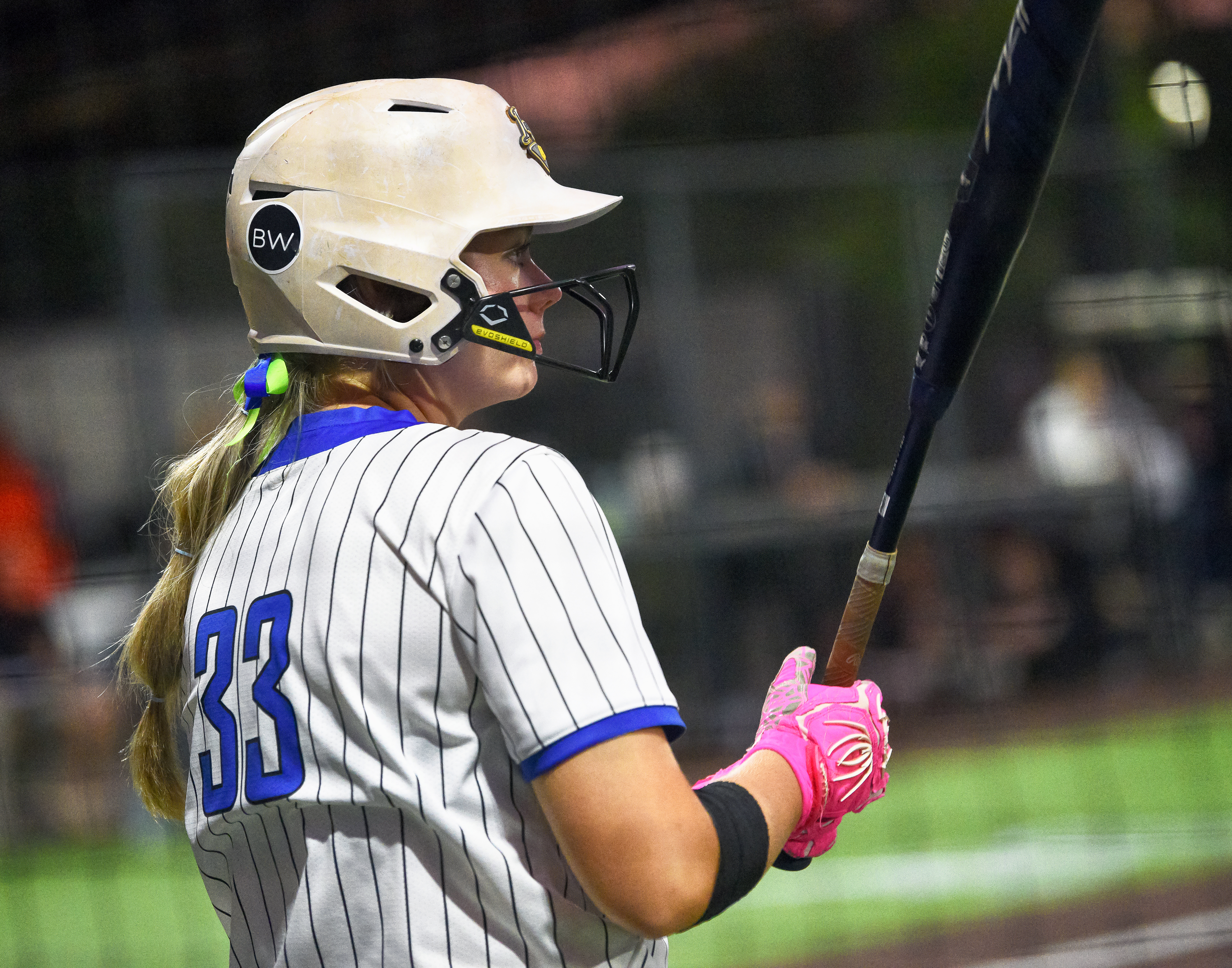Limestone County bald eagle recuperating at wildlife center
Published 6:30 am Sunday, November 15, 2015

- Mary Stockard, left, and Logan McAlpin of the Alabama Wildlife Center in Pelham administer fluids Wednesday to a young male bald eagle found with a broken wing in Limestone County. The eagle’s prognosis is good and could return to its local habitat within three months.
A young bald eagle from Limestone County is recovering in a Birmingham facility after being discovered injured by the roadside early last week.
Doug Adair, executive director of the Alabama Wildlife Center, said the eagle was transported to the AWC after it was found by Limestone County couple Moses McGuire and his wife Teresa Anne Garrard-McGuire. The raptor was found on the side of Easter Ferry Road near a deer carcass it was likely feeding on.
The eagle suffered a broken wing, more specifically a fracture of the left ulna. Adair equated the ulna of a raptor to the outer bone in the human arm connecting the elbow to the wrist. He added the eagle’s injury was likely sustained after being hit by a car.
Adair described the raptor as being between five and seven years old and weighing 3,800 grams, making him a healthy young male.
“The prognosis is good for that kind of wing break, and if all goes well and the bones align properly, it should heal completely and should be able to be released back into the wild,” Adair said.
He didn’t offer a specific amount of time it would take the wing to heal, but Adair said it could take up to three months. He added the raptor would be re-released back into Limestone County after recuperating.
“We like to get them back to from where they came,” he said.
The immediate treatment for the eagle was to stabilize the wing, administer pain medication and fluids.
“He’ll be able to have solid food in short order, which would be prepared mice,” Adair said.
When asked about the number of injured eagles brought to the AWC, Adair said it cares for five-to-six each year. Car-raptor collisions aren’t rare, though Adair said most raptor injuries occur from fishing line entanglement or “tangling with a predator of some sort.”
Despite the occasional injury, Adair said eagle numbers are increasing in Alabama.
“A bald eagle is a rare enough patient that everyone takes notice,” he said. “There’s something about a bald eagle; if you’re holding one and you’re up close and personal, they’re such a majestic animal.”
About the AWC
The AWC, formerly known as the Alabama Wildlife Rehabilitation Center, treats about 2,000 avian patients each year from 100 different species. The “Rehabilitation” component was dropped from the agency’s name, Adair said, because of an increased focus on community education.
Last year, the group spoke to about 30,000 Alabamians across the state.
“We talk about conservation, education and preservation of the amazing wildlife we are blessed with here in Alabama,” he said, adding Alabama is second to only Florida in terms of wildlife diversity per acre. “We have great wildlife resources, but we need to be good stewards of those resources.”
For more about the AWC, visit www.awrc.org.





